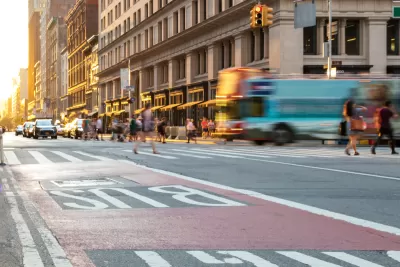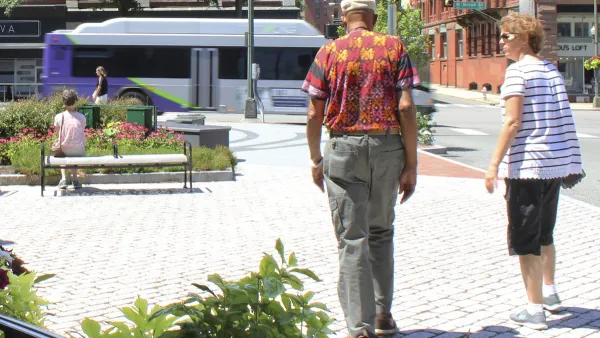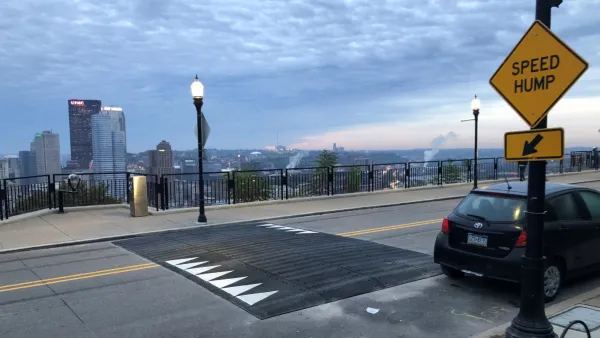While traffic fatalities remain far above zero, the city saw fewer injuries compared to areas without Vision Zero initiatives.

In a piece for The New York Times, James Barron assesses the progress made since New York City first announced its Vision Zero pledge 10 years ago.
According to a new study in The American Journal of Public Health, Vision Zero did more than save lives: it saved Medicaid over $90 million in reimbursements in its first five years. The study found that traffic-related injuries fell significantly compared to counties without Vision Zero programs. “The study also found that low-income New Yorkers had fewer injuries from crashes involving automobiles, bicycles, motorcycles and pedestrians. The sharpest drop in traffic-related injuries, the study said, was among Black New Yorkers.”
The Vision Zero initiative reduced speed limits from 30 miles per hour to 25 mph, made physical safety improvements on city streets, and boosted traffic enforcement, including red light cameras. “The state authorization for red-light cameras will expire this year unless the State Legislature reauthorizes the program. The city has asked to expand it, noting that the cameras have reduced red-light running by 73 percent.”
FULL STORY: How Vision Zero Made New Yorkers Safer and Saved Money

Planetizen Federal Action Tracker
A weekly monitor of how Trump’s orders and actions are impacting planners and planning in America.

Chicago’s Ghost Rails
Just beneath the surface of the modern city lie the remnants of its expansive early 20th-century streetcar system.

San Antonio and Austin are Fusing Into one Massive Megaregion
The region spanning the two central Texas cities is growing fast, posing challenges for local infrastructure and water supplies.

Since Zion's Shuttles Went Electric “The Smog is Gone”
Visitors to Zion National Park can enjoy the canyon via the nation’s first fully electric park shuttle system.

Trump Distributing DOT Safety Funds at 1/10 Rate of Biden
Funds for Safe Streets and other transportation safety and equity programs are being held up by administrative reviews and conflicts with the Trump administration’s priorities.

German Cities Subsidize Taxis for Women Amid Wave of Violence
Free or low-cost taxi rides can help women navigate cities more safely, but critics say the programs don't address the root causes of violence against women.
Urban Design for Planners 1: Software Tools
This six-course series explores essential urban design concepts using open source software and equips planners with the tools they need to participate fully in the urban design process.
Planning for Universal Design
Learn the tools for implementing Universal Design in planning regulations.
planning NEXT
Appalachian Highlands Housing Partners
Mpact (founded as Rail~Volution)
City of Camden Redevelopment Agency
City of Astoria
City of Portland
City of Laramie





























